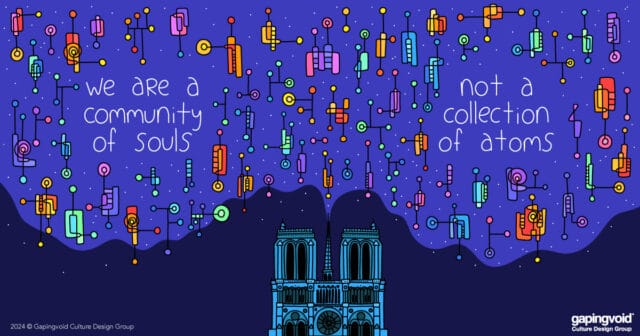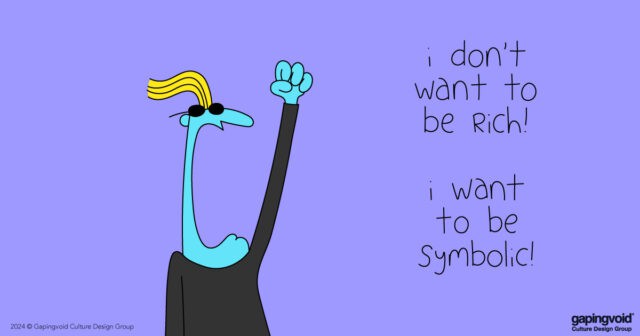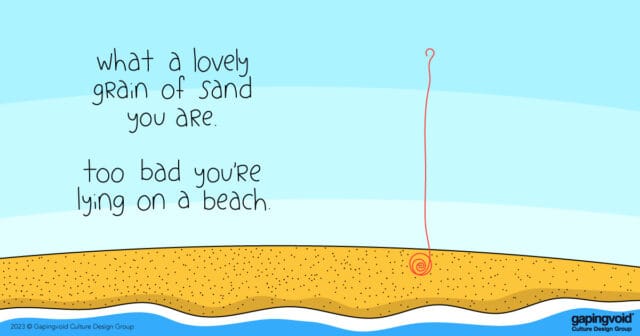
[Photo of The Experience Studio. Those sixteen small panels on the right are actually my cartoons.]
In my latest “Crazy Deranged Fools” newsletter that I sent out earlier today, I wrote about “The Kinetic Quality”:
We’ve always seen the Kinetic Quality working in marketing, working with brands. “By buying Brand X, I feel hipper, cooler, sexier, more secure, more in control” etc etc. But what I’m finding out is, this also works with art. To me, the interesting thing about art is not the usual “Heroic, absinthe-soaked, vision quest lone individual archetypal artist crap”, but how the art is USED by the person who has it hanging on the wall. What’s it actually there for? Decoration? Showing off? A conversation starter? An ice breaker? A way of telling a story? Something to brighten up the room? A symbol of social status? An expression of individual worldview? An expression of emotion? A totem to remind oneself of something inspirational and/or important? Perhaps a bit of all these?
So I’m seeing two worlds collide here: The internal, solitary part of making the art, and the external social part of how the piece of art is actually used.
Art? Used? Is art actually allowed to be “used”? Would the Art Police allow that? Instead of calling them “Patrons”, can we call art buyers “Users” instead? Would you be offended if I called you that? There’s no wrong answer…
Potential Energy turning into Kinetic Energy. I guess one of the reasons I’ve always had such liberal licensing terms [“Want to use my stuff on your PowerPoint Slides for free? Sure, go right ahead!!!….”] is that I like seeing my work being USED. If people like my work, that’s great. But if they can actually find it tangibly useful, even better.
Soon after, Tony Kirton of The Experience Stuido sent me the photograph above, with the following note:
We positioned the your cartoons at the entrance of the studio, to kick-start a relevant conversation. Never failed!
It’s little mental trick that Kathy Sierra taught me- Don’t think of them as “Customers” or “Patrons”, think of them as “Users”. Whatever thing you’re selling, it’s not what it does that’s interesting; it’s how people use it that’s interesting. “People Matter. Objects Don’t.” Exactly.



